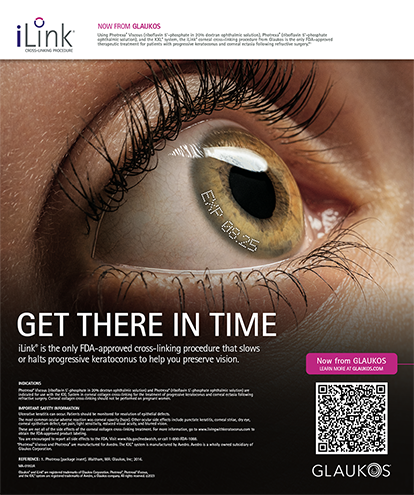

Advances in cataract surgery have increased its refractive accuracy and safety, thereby enhancing patients’ quality of life. The criteria for cataract surgery and refractive lensectomy (also termed refractive lens exchange) have evolved over about 40 years. One of us (S.A.A.) has been performing refractive lensectomy for decades. Initially, the driving force behind this approach was that an individual with high ametropia (eg, -20.00 or +8.00 D) was considerably more impaired at age 30 than a 65-year-old patient with 1+ nuclear sclerosis and minimal myopia. This stance faced strong opposition from many surgeons in the late 1990s, but it has gained wider acceptance over time.
In recent years, an increasing number of ophthalmic surgeons and regulatory bodies have recognized the advantages of immediately sequential bilateral cataract surgery (ISBCS), including for patients electing to undergo refractive lensectomy. This article explores the advantages of ISBCS, particularly in the context of refractive lensectomy; highlights its positive impact on patient satisfaction; and addresses previously raised safety concerns.
ENHANCED PATIENT EXPERIENCE
Delayed sequential bilateral cataract surgery (DSBCS) became the norm when no effective infection prevention or treatment was available. As surgical techniques, procedural sterility, microbiology, and antibiotics advanced, infection risks declined. Many surgeons have decreased the interval between eyes from months to 1 week or even a few days.
ISBCS is a convenient and efficient alternative to DSBCS. Patients undergoing refractive lensectomy tend to be younger and busier than those requiring traditional cataract surgery, making same-day bilateral surgery appealing. ISBCS offers four main advantages over DSBCS (see the sidebar).
OR cleaning and ventilation requirements increased during the COVID-19 pandemic. ISBCS can improve surgical and clinical efficiency. Integrating ISBCS into resident teaching can benefit all involved parties. Residents can help with the increased requirements of performing ISBCS, and the education prepares them to be better cataract surgeons when they graduate.1
CONCERNS
The main drawback of ISBCS is financial. In many jurisdictions, operating on both eyes on the same day generates significantly less revenue for surgeons, hospitals, and surgery centers than DSBCS.2
Another concern revolves around the safety profile of ISBCS. Critics argue that same-day surgery may increase the risk of complications, particularly infection. Numerous studies and clinical trials, however, have established the safety of ISBCS when performed following recommended guidelines.3-6 Each eye should be treated as a separate surgery, and the use of intracameral antibiotics at the conclusion of surgery has drastically reduced the rate of endophthalmitis.1,7 The International Society of Bilateral Cataract Surgeons has estimated that the risk of bilateral simultaneous endophthalmitis after ISBCS is less than 1:100 million when guidelines are followed.8 Furthermore, ISBCS has been shown to be less risky than multiple trips to the hospital or surgery center, plus the extra follow-up visits.9,10
Four Advantages of ISBCS
1. Swift visual rehabilitation. Patients experience improved vision in both eyes almost immediately after ISBCS. A shorter period of compromised vision allows quicker resumption of normal daily activities. Binocularity returns to ISBCS patients immediately versus up to 4 months postoperatively for DSBCS patients.1
2. Reduced anxiety and stress. Patients often experience fear and stress when undergoing surgery. ISBCS eliminates the need for additional preoperative evaluations, anesthesia, and postoperative follow-up visits. It also avoids so-called second-eye syndrome, where patient expectations for the second-eye surgery increase, along with their anxiety levels.
3. Symmetry and visual consistency. ISBCS helps achieve better visual symmetry and consistency by treating both eyes on the same day. Patients often report enhanced depth perception and improved binocular vision almost immediately after ISBCS, leading to an overall better visual experience. Neural adaptation to presbyopia-correcting IOLs also tends to be quicker with ISBCS compared to DSBCS.2
4. Streamlined process. ISBCS reduces the number of visits to the doctor’s office and surgery center, saving patients and their families time, effort, and other resources. This is particularly beneficial for those who live far from the hospital or surgery center. Fewer visits also mean less time off work.
1. Lundström M, Albrecht S, Nilsson M, Åström B. Benefit to patients of bilateral same-day cataract extraction: randomized clinical study. J Cataract Refract Surg. 2006;32(5):826-830.
2. Holz HA, Carolan JA. ISBCS and presbyopia correcting intraocular lenses. In: Arshinoff SA, ed. Immediately Sequential Bilateral Cataract Surgery (ISBCS) Global History and Methodology. 1st ed. Academic Press; 2022:119-131.
A third concern is refractive accuracy. ISBCS removes the opportunity to adjust the choice of IOL for the second eye based on the outcome of the first eye. Numerous studies on fine-tuning the IOL selection based on the first eye exist; this becomes less relevant, however, with each advance in biometry, IOL calculations, and corneal topography and tomography.11 Although refractive surprises can still occur, it can be argued that no method of interprocedural adjustment can reliably ensure a better outcome for the second eye.10 In some cases, adjusting the IOL power for the second eye based on the result of the first could even result in worse outcomes owing to varying errors of predicted refraction between eyes.12
Herrinton et al recently reported no difference in refractive outcomes between ISBCS and DSBCS.13 Similar visual acuity and refractive outcomes were also reported for both ISBCS and DSBCS when multifocal IOLs were implanted.11
CONCLUSION
By embracing ISBCS for refractive lensectomy, surgeons can provide patients and their families with greater efficiency, faster functional recovery, and less inconvenience—all without compromising safety or refractive outcomes.
ISBCS should be performed according to the most comprehensive guidelines, such as those recommended by the Canadian Ophthalmological Society.14
1. Qi SR, Hébert M, You E, et al. Reply: immediately sequential bilateral cataract surgery (ISBCS): an Academic Teaching Center’s experience. J Cataract Refract Surg. 2021;47(15):1604-1605.
2. Amsden LB, Shorstein NH, Fevrier H, Liu L, Carolan J, Herrinton LJ. Immediate sequential bilateral cataract surgery: surgeon preferences and concerns. Can J Ophthalmol. 2018;53(4):337-341.
3. Chung JK, Park SH, Lee WJ, Lee SJ. Bilateral cataract surgery: a controlled clinical trial. Jpn J Ophthalmol. 2009;53(2):107-113.
4. Nassiri N, Nassiri N, Sadeghi Yarandi SH, Rahnavardi M. Immediate vs delayed sequential cataract surgery: a comparative study. Eye. 2009;23(1):89-95.
5. Sarikkola AU, Uusitalo RJ, Hellstedt T, Ess SL, Leivo T, Kivelä T. Simultaneous bilateral versus sequential bilateral cataract surgery: Helsinki Simultaneous Bilateral Cataract Surgery Study Report 1. J Cataract Refract Surg. 2011;37(6):992-1002.
6. Serrano-Aguilar P, Ramallo-Fariña Y, Cabrera-Hernández JM, et al. Immediately sequential versus delayed sequential bilateral cataract surgery: safety and effectiveness. J Cataract Refract Surg. 2012;38(10):1734-1742.
7. Kessel L, Flesner P, Andresen J, Erngaard D, Tendal B, Hjortdal J. Antibiotic prevention of postcataract endophthalmitis: a systematic review and meta-analysis. Acta Ophthalmol. 2015;93(4):303-317.
8. Chen MY, Qi SR, Arshinoff SA. Bilateral simultaneous postoperative endophthalmitis: review of cases reported over the past 50 years. J Cataract Refract Surg. 2022;48(7):850-854.
9. Chandra A, Claoué C. Simultaneous bilateral cataract surgery: a further advantage. Eye (Lond). 2010;24(6):1113-1114.
10. Bolger J, Arshinoff SA, Chen MY. The logic behind immediately sequential bilateral cataract surgery. In: Arshinoff SA, ed. Immediately Sequential Bilateral Cataract Surgery (ISBCS). 1st ed. Academic Press; 2023:45-51.
11. Arshinoff SA, Gupta R, Pereira A. Biometry for ISBCS. In: Arshinoff SA, ed. Immediately Sequential Bilateral Cataract Surgery (ISBCS). 1st ed. Academic Press; 2023:101-111.
12. Jabbour J, Irwig L, Macaskill P, Hennessy MP. Intraocular lens power in bilateral cataract surgery: whether adjusting for error of predicted refraction in the first eye improves prediction in the second eye. J Cataract Refract Surg. 2006;32(12):2091-2097.
13. Herrinton LJ, Liu L, Alexeeff S, Carolan J, Shorstein NH. Immediate sequential vs. delayed sequential bilateral cataract surgery: retrospective comparison of postoperative visual outcomes. Ophthalmology. 2017;124(8):1126-1135.
14. Hébert M, Légaré ME, Arshinoff SA. ISBCS in Canada. Chapter 16.9, Appendix 16.9.1. In: Arshinoff SA, ed. Immediately Sequential Bilateral Cataract Surgery (ISBCS). 1st ed. Academic Press; 2023:221-229.




